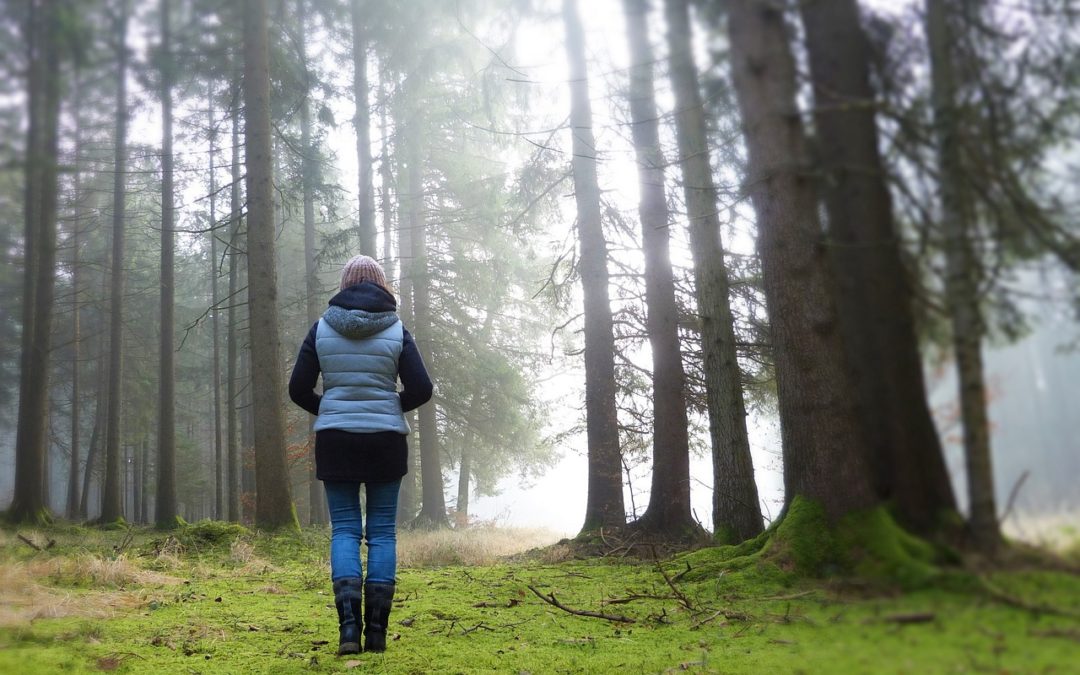It’s easy to get lost in the busyness and pace of life. Moving from one task to the next, or from one responsibility to another without pause, we can lose touch with our center and who we really are.
Every age has seen crises, though no recent one has lived the quick pace of change that we are experiencing now. As life accelerates, we can lose our footing if we are not careful.
Taking mindful pauses on a regular basis restores a healthy rhythm and helps us return to what is most important. If we do not put a rhythm to life, it will run away with us… and often in a direction that we would not have chosen.
Cultures around the world have long encouraged daily rituals and held seasonal ceremonies to pause for reflection and direction. Yet with more access to world culture than ever before, we have somehow lost touch with practices that keep us in tune with the natural rhythms of life. Instead, it’s “go time” all the time. Now we have to remember the lost practice of pausing.
Our little everyday actions add up to significant effects on health and happiness. Threading these small actions with clear intention may compound in great wealth: the wealth of health and happiness that we enjoy with others.
To do this, we need a common thread of intention that can link our actions together. What intention do we want to guide our actions? It will compound over time, and it is what we will become: what we repeat, we become.
And so what’s important?
Fortunately, we have interviews with thousands of people at the end of life to clarify this question. Consistently, the 3 things people value most when reflecting at the end of life are:
- Love
- Laughter
- Legacy
In other words, the most important things in life are experiences we share with loved ones and the positive impact we have on others.
We also see a theme of personal growth, cultivation, or “self-actualization.” We see this expressed as deepening our capacities in chosen domains and expanding our awareness or worldview.
To personalize these insights, I like to simplify them into: compassion & wisdom.
The intention of cultivating compassion and wisdom combines what we have learned from interviews with the dying, and from elders in distant cultures. In this context, compassion is love in action expressed across any domain. It is the active component of “Love, Laughter, and Legacy.” Wisdom is the reflective component of expanding awareness. It is the deepening understanding as we savor and reflect on life. I encourage you to find language that works for you to help translate these insights into your personal life.
Have we lost touch with what actually matters?
There’s nothing new here, however, these understandings are not the dominant message of our modern culture. In some ways, this loss of what leads to health and happiness is a root cause of disease. Consuming does not cultivate happiness… kindness does.
By pausing to reflect on this, we begin cultivating wisdom. By aligning our actions with this understanding, we practice compassion. This nurtures the wellbeing of ourselves and others. This is the essence of good medicine and a good life.
Let’s take a moment to dig deeper into unconscious habits and name some of the forces driving us away from health.
There is a saying, “When you suffer, you will seek.” Unfortunately many of us are too distracted or overwhelmed to listen to the whispers of suffering. Instead we only pay attention to the screams of suffering which may take the forms of physical, mental, relationship, or societal ills. If we are overwhelmed or feel unsupported, we may even try to dampen the screams with further distraction. In this age of screens and the economy of attention, distraction is readily available with a button click and a hit of dopamine reinforcement. Short term relief slowly undermines long term wellbeing as the habit of distraction leads us away from what is actually important.
Media and marketing can add to the problem. Many of us have internalized false narratives of deficiency or shame that compel us to chase happiness through consumption and compensation. Distraction can feel good at the moment… really good. The content algorithms custom-tailor the stimulus to capture engagement. We can lose touch with what is actually important in exchange for the next shiny or horrible thing that flirts with our attention.
Pausing to reflect and direct returns us to what is important. To do so, we have to release the distractions and return to our intention… again, and again. It is a practice.
Let’s explore an example practice to cultivate our intention on a regular basis:
- Take a few moments to contemplate:
- Love
- Laughter
- Legacy
- What do they mean to you? What is the experience of each one? Try to engage your imagination, and try to experience them with all of your senses: sight, smell, touch, hearing, taste. Take at least 15 seconds with each sense, then try to combine them into a full sensory experience.
- Find a word, phrase, prayer, symbol, or image that conveys the experience for you. This serves as your meditation support. Contemplate your support while holding that full sensory experience generated above. We are anchoring the felt meaning to our support such that it can later evoke or remind us of the experience.
- Every morning take a moment to visit this experience and support. You can take the experience quite deeply if you stay with it. In the evening, you can do the same.
- Throughout the day, return to your meditation support. You can post images, symbols, or written phrases in places to remind you. You can wear a version of it. You can have an action cue such as opening the door or answering the phone that reminds you to return to the experience.
- If you try the practice, you will likely begin to notice that you are recalibrating your system. Actions and beliefs that do not align with this experience will feel “off,” less desirable, or unhealthy. Actions that do align with the experience will cultivate it even further. When that happens, take a moment to savor it. When you see the same in others, take a moment to appreciate it. Fully experience the goodness of it.
- With practice, you internalize the experience and recalibrate your compass such that your daily actions and thoughts arise from this underlying, fundamental intention.
Eventually this intention becomes a continuous thread linking your actions and awareness throughout your life. We replace the habit of distraction with the habit of positive intention until this process becomes our natural expression. This is a medicine for ourselves, those around us, and for those to come.
Footnote: if you want to really apply the practice, consider trying a 40 day commitment of at least 10-20 minutes per day. Slowly the practice will permeate your day, and eventually it becomes a continuous thread. We all stumble at times, so if you forget or slip, just return to the practice. Cultivating the meditation support that is anchored to your full sensory experience gives an easy way to return and re-align to your fundamental intention. Savoring the experience of yourself and others engaged in such actions changes your brain structure and supports positive mind states in the future. This is a very simple practice, though it is very effective. If you are interested in more practices like this or the neuroscience behind it, consider reading Hardwiring Happiness by Rick Hanson, PhD. While this practice is not taken from his book, his book provides much of the current neuroscience behind why it is effective.
This blog post was written by Dr. Brian Lewis, MD, MPH, Co-Founder and Medical Director of Integrative Family Medicine of Asheville. At Integrative Family Medicine, we have an integrative focus that supports long-term wellness by addressing the whole person and teaching our patients the skills they need to take better care of themselves. To learn more about our practice, visit our website: www.integrativeasheville.org.

